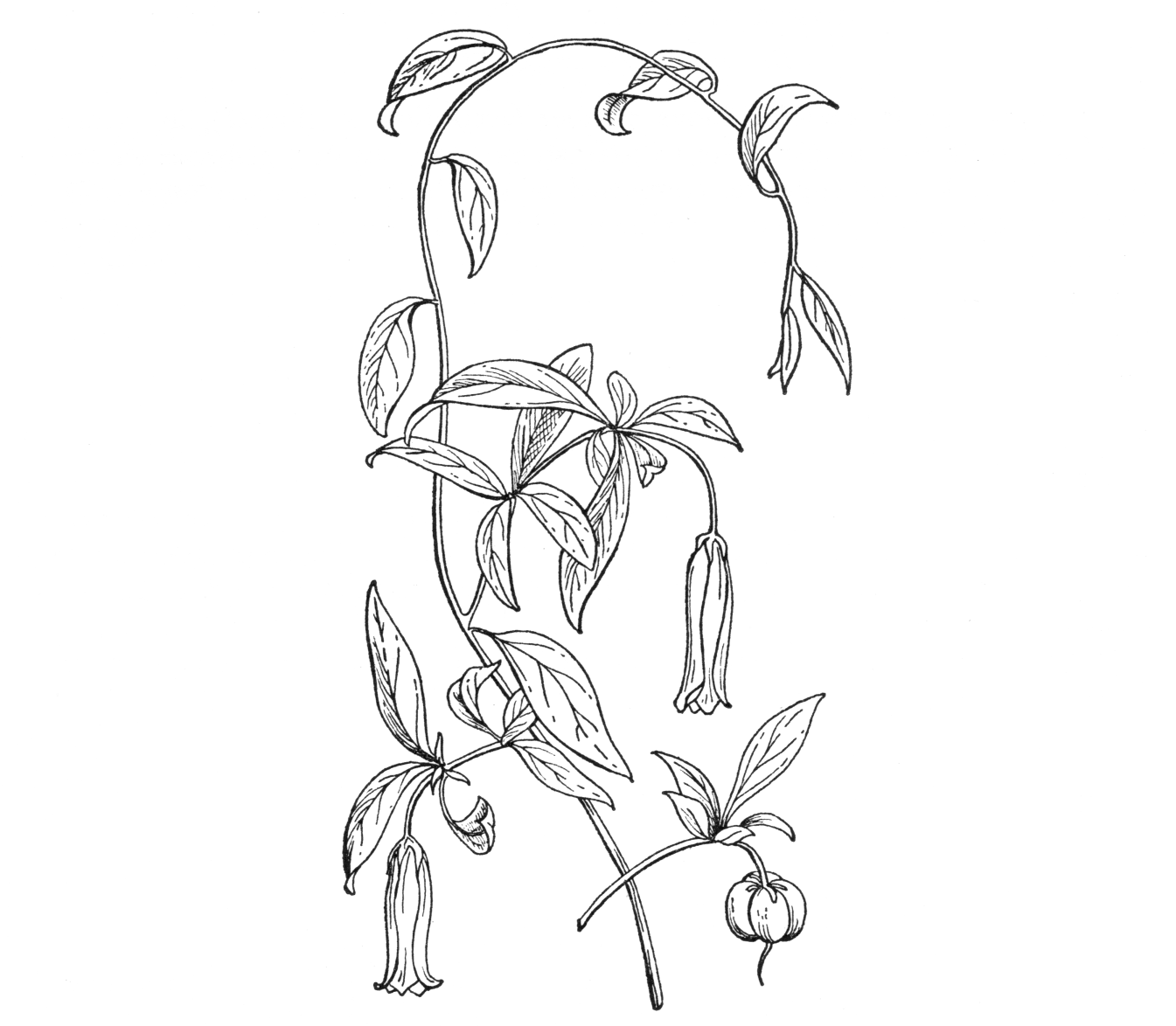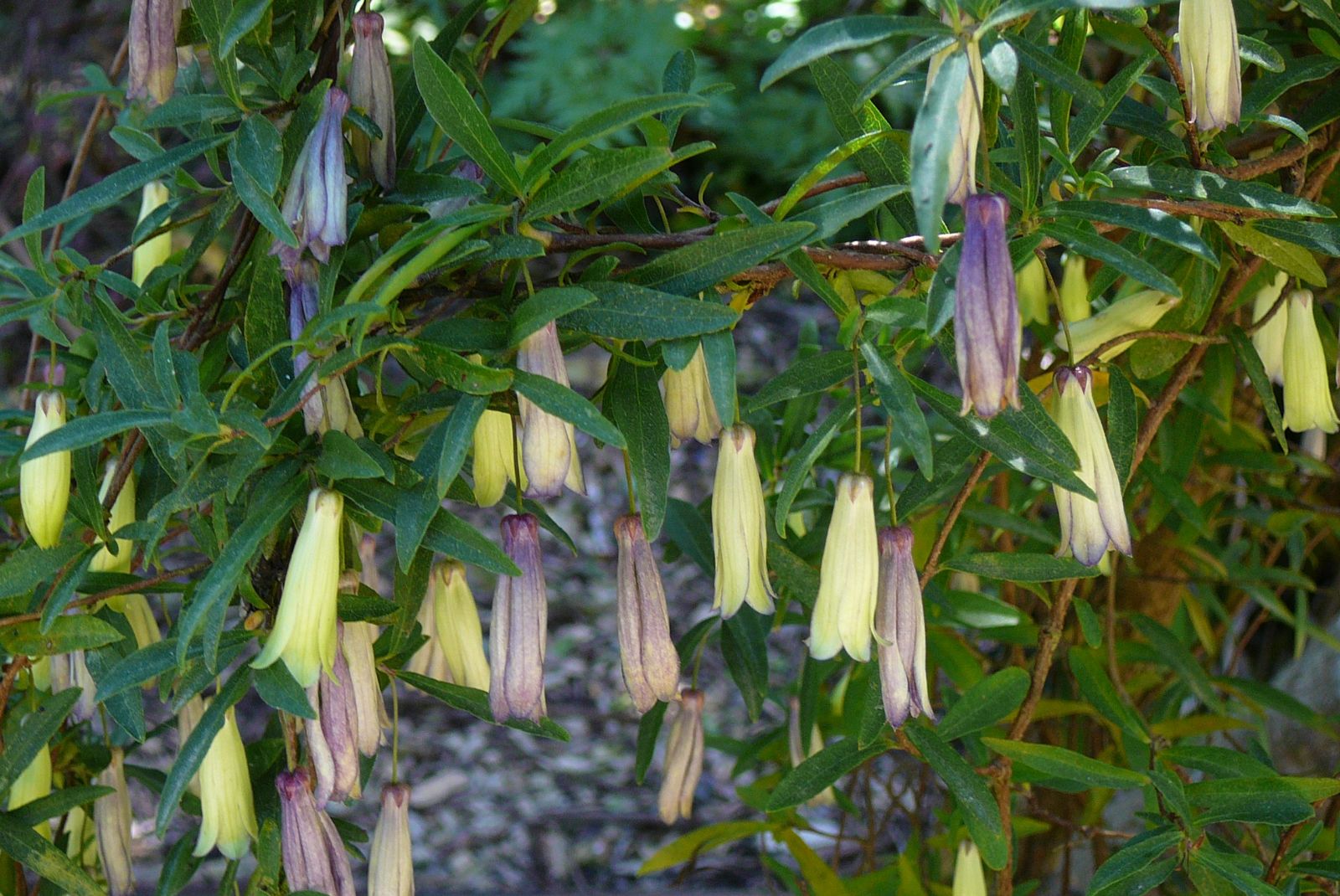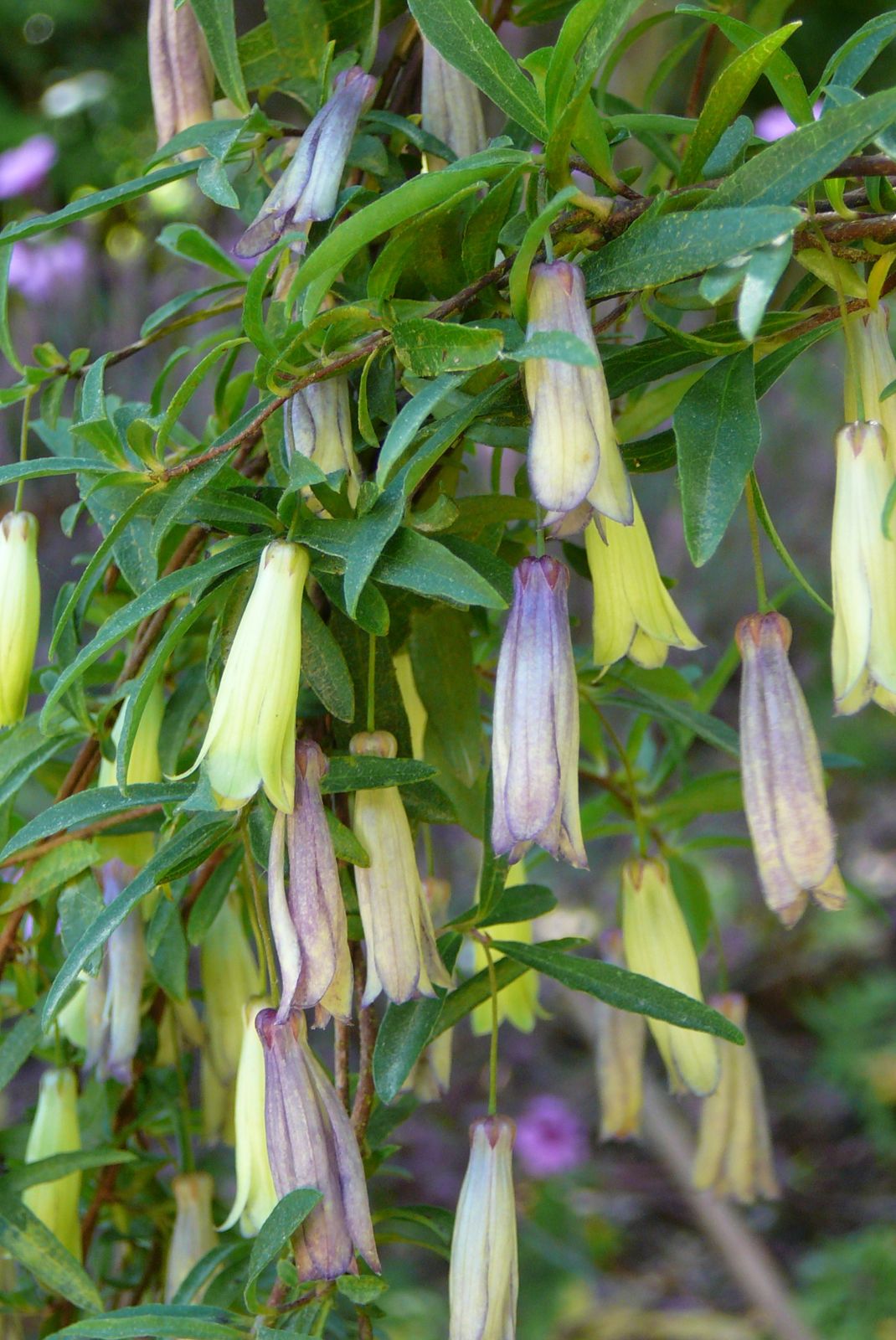Billardiera longiflora
Credits
Article from Bean's Trees and Shrubs Hardy in the British Isles
Recommended citation
'Billardiera longiflora' from the website Trees and Shrubs Online (treesandshrubsonline.
Genus
Other taxa in genus
A climbing, evergreen shrub up to 6 ft high, with slender, glabrous stems and narrow, lanceolate, entire leaves, 1 to 11⁄2 in. long. Flowers solitary in the leaf-axils, each one on a slender stalk, 1⁄2 in. long, pendulous; the five petals are oblanceolate, 3⁄4 in. long, free but not spreading, greenish yellow. Fruit an oblong-globular, dry capsule, of a beautiful dark blue, 3⁄4 to 1 in. long. Bot. Mag., t. 1507.
A native of Tasmania; introduced in 1810. This delightful climber is rather tender and needs a position where it is sheltered from cold winds and strong sun. It is at its best near the Atlantic seaboard, and grew very well at Rostrevor, Co. Down, as it does today at Inverewe and in many other mild gardens. In southern England it is best given the protection of a wall. It flowers freely in July and is then very pretty, but its greatest beauty comes in October and November, when the fruits acquire their charming colour. The fruit contains abundant seed, which germinates readily; it may also be increased by cuttings. Although the form commonly seen in cultivation has dark blue fruits, the colouring on wild plants is very variable, from shades of purple through rose to pure white. These various forms are said to breed more or less true from seed.



